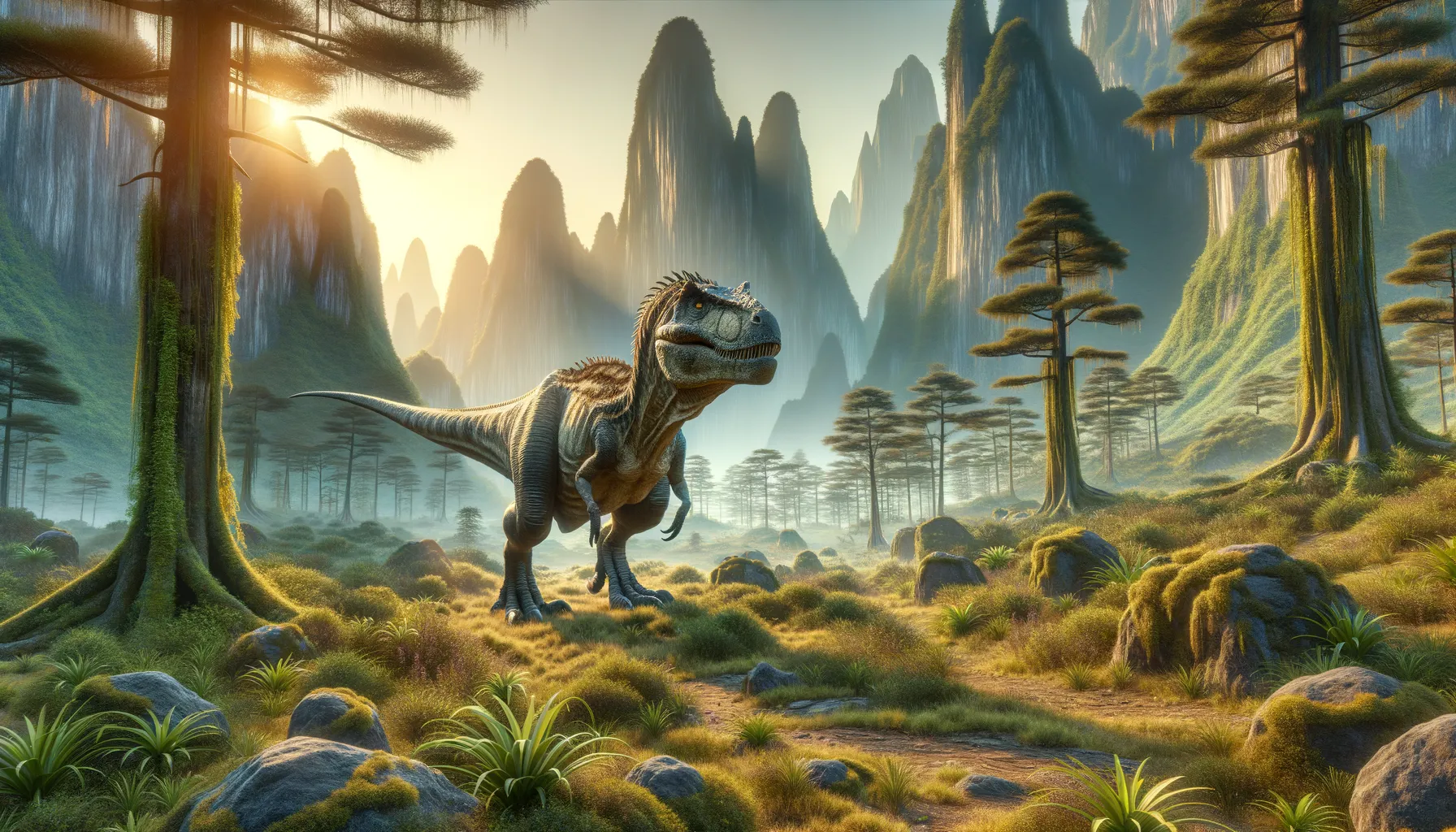
Shuangbaisaurus
A Jurassic predator from China's past.
Period
Jurassic
Length
Approximately 7 to 8 meters long.
Height
Around 2 meters at the hips.
Weight
Approximately 300 to 400 kg.
Shuangbaisaurus was a fascinating carnivorous dinosaur that roamed the earth during the Jurassic period. Known for its moderate size and predatory nature, it lived in regions that are currently part of China. This dinosaur's remains provide valuable insights into the diversity of theropods, and its discovery has helped paleontologists understand more about the ecosystems of prehistoric China.
Diet
Shuangbaisaurus primarily fed on smaller dinosaurs and possibly other reptiles. Its teeth and jaw structure indicate a preference for a carnivorous diet, capable of tearing flesh.
Hunting
It likely relied on ambush tactics, using its environment to surprise prey. Its moderate speed and agility would have been advantageous in quick, decisive attacks.
Environmental challenges
During its time, Shuangbaisaurus faced challenges such as changing climates and competition for food with other predators. The region it lived in was likely prone to environmental shifts, affecting its food sources. Such challenges would have required adaptability in hunting and survival strategies.
Speed
It had a moderate speed suitable for ambush hunting.
Lifespan
It lived for approximately 15-20 years.
First discovery
Discovered in the Yunnan Province of China in 2016.
Fun Facts
- Shuangbaisaurus is a theropod dinosaur that lived during the Jurassic period, about 170 million years ago.
- The name Shuangbaisaurus means 'Shuangbai lizard', named after the region in Yunnan, China, where it was discovered.
- Fossils of Shuangbaisaurus were first found in the early 21st century, providing new insights into Jurassic-era predators in Asia.
- Shuangbaisaurus is believed to have been a bipedal carnivore, similar to other theropods like Allosaurus and Tyrannosaurus rex.
- Although not much is known about its size, it is speculated to have been a medium-sized predator based on related species.
- Shuangbaisaurus adds to the diverse range of theropod species found in the fossil-rich regions of China.
- The discovery of Shuangbaisaurus highlights the importance of continued paleontological exploration in uncovering ancient life.
Growth and Development
Young Shuangbaisaurus were likely vulnerable and required protection or concealment from larger predators. As they grew, their size and strength increased, providing better defense and hunting capabilities. Rapid growth in early years was essential to survive in their competitive environment.
Habitat
Shuangbaisaurus inhabited regions with dense vegetation, likely favoring forested areas that provided cover for hunting. The climate at the time was warm, with seasonal variations influencing water and food availability. These conditions supported a diverse ecosystem with abundant prey.
Interaction with other species
Shuangbaisaurus interacted with both predator and prey species, competing with similar-sized theropods for food resources. Its presence in the ecosystem played a role in controlling the populations of smaller herbivores, maintaining the ecological balance.
Natural lifespan
It naturally lived between 15 to 20 years.
Reproduction
This dinosaur likely laid eggs in clutches, with nesting behavior similar to that of modern birds. Parental care, if any, would have been minimal, as is common with many dinosaur species. The survival of hatchlings was likely challenging due to predation pressures.
Social behaviour
Shuangbaisaurus may have hunted alone or in small groups, depending on prey availability. Social interactions could include competitive displays for dominance or territory. While primarily solitary, occasional cooperation with others might occur during hunting.
Fossil locations
The main fossil discovery site of Shuangbaisaurus is in the Yunnan Province of China. These findings have been crucial for understanding the dinosaur's anatomy and living conditions. The location provides insight into the Jurassic period's regional biodiversity.
